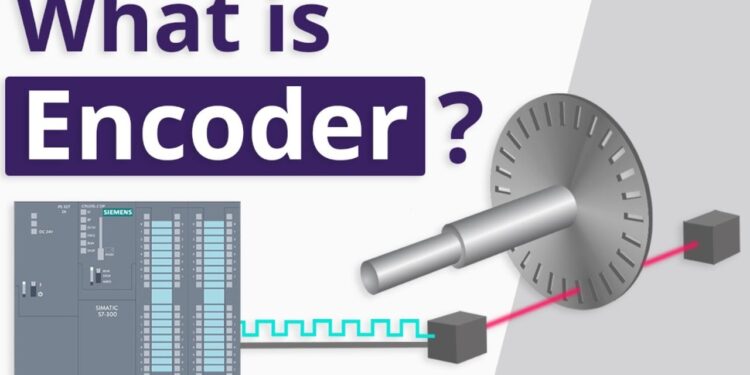Google “encoder,” and you’ll see a large and perplexing array of results. Encoders are employed in machines for motion feedback and motion control for our needs. In machinery across all industries, encoders are present. Plotters utilize encoders, robotics, packaging, conveying, automation, sorting, filling, imaging, and many other devices. They may have escaped your attention, but they do exist. We will offer you a fundamental overview of what an encoder is and does in this blog post and video.
What IS an encoder?
An encoder is a sensor device that offers feedback, to put it simply. Encoders translate movement into an electrical signal that a counter, PLC, or any control device in a motion control system can read. A feedback signal from the encoder can be used to calculate position, count, speed, or direction. This data can be used by a control device to transmit a command for a specific task. For instance: An encoder with a measuring wheel tells the control device how much material has been fed into a cut-to-length application, allowing the control device to determine when to cut.
In an observatory, positioning input from the encoders informs the actuators of the location of a moving mirror.
Encoders on railroad-car lifting jacks offer precision-motion feedback, allowing the jacks to raise simultaneously.
The PLC uses the encoder signal to regulate the timing and speed of bottle rotation in a precision servo label application system.
A print head is activated to mark a specific point in a printing application by feedback from the encoder.
Encoders attached to a motor shaft on a giant crane offer positioning input, so the crane knows when to take up or let go of its load.
Feedback lets the filling machines know where the containers are in relation to one another when filling bottles or jars.
Encoders in elevators alert the controller when the car has arrived on the right floor and is in the right place. In other words, elevator doors open level with the floor thanks to encodermotion feedback to the elevator controller. Without encoders, you might use an elevator to enter or exit rather than just leaving onto a level floor.
Encoders provide robots with motion feedback on automated production lines. This can entail making sure the robotic welding arms on a vehicle assembly line have the correct information to weld in the proper places.
The procedure is the same regardless of the application: the controller sends a signal to the machine telling it to do a task after receiving a count from the encoder.
How does an encoder work?
Mechanical, magnetic, resistive, and optical technologies are all used by encoders to create signals, with visual being the most popular. The encoder in optical sensing gives feedback depending on the interruption of light.
The fundamental design of an incremental rotary encoder that uses optical technology is shown in the diagram below. The Code Disk, which has an opaque line pattern, is traversed by an LED beam of light (much like the spokes on a bike wheel). The unclear lines on the Code Disk on the encoder shaft cause the light beam from the LED to be broken before being detected by the Photodetector Assembly. This generates a pulse signal: light = on; no light = off. The signal produces the desired function once it is conveyed to the counter or controller.












